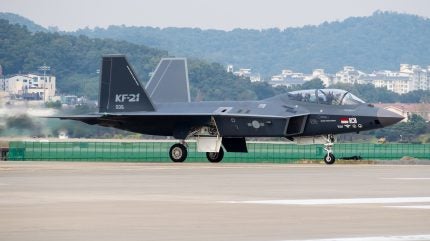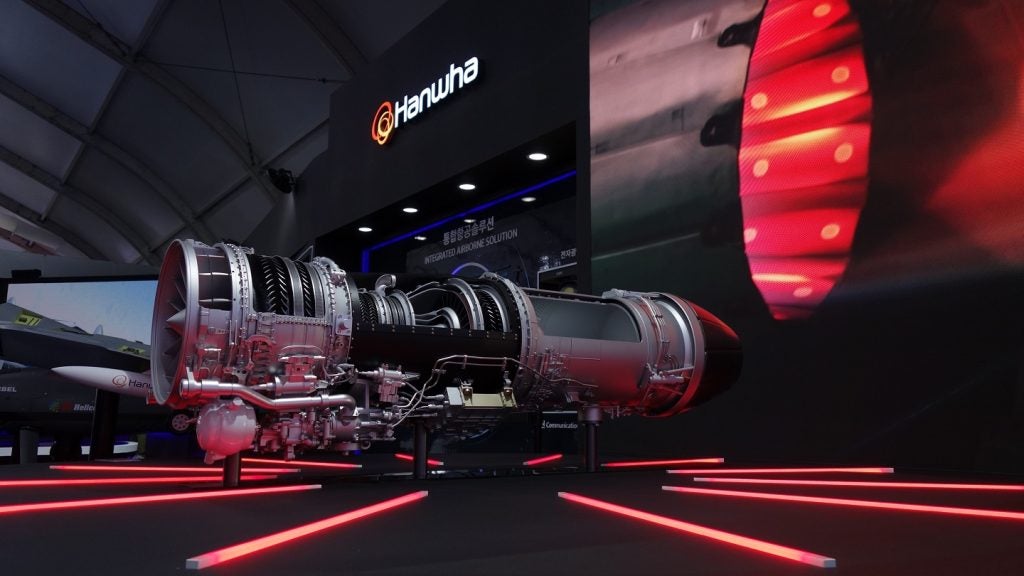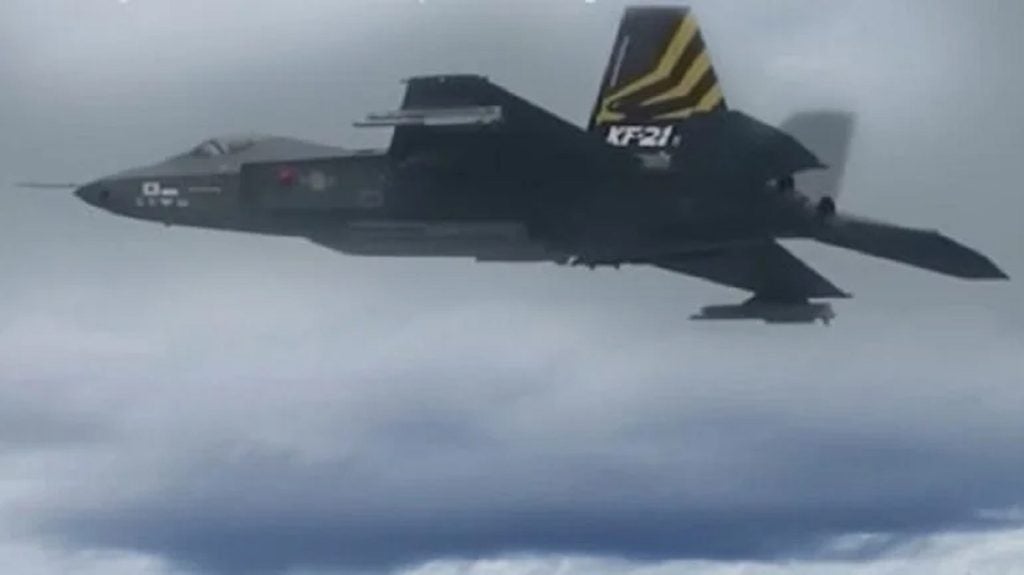
South Korea’s aspirations to have a first batch of 40 KF-21 Boromae fighters delivered by 2028 has been backed up by an announced contract between Defense Acquisition Program Administration (DAPA) and Hanwha Aerospace for the build of at least 40 F414 engines between 2024-2027.
In a 25 June release, Hanwha Aerospace said that the contract for “over 40 F414 engines and spare modules for the KF-21”, valued at around $401m. The contract period runs from June 2024 to December 2027, during which Hanwha Aerospace will also provide engine maintenance manuals and on-site technical support.
The supplied engines will be installed in the first batch of KF-21, as Hanwha Aerospace is obliged to supplying engines until the end of the KF-21 production run as the country’s sole aircraft engine manufacturer.

Since 1979, Hanwha Aerospace has supplied engines for Korean military aircraft, including the F-4, KF-5, KF-16, F-15K, and T-50, through overseas license production. The F414 engine for the KF-21 will be produced at the company’s Changwon Plant 1, utilising a license from GE Aerospace.
Hanwha Aerospace stated that the contract “serves as a stepping-stone” for the company’s plans to develop “next-generation engine technologies”, specifically those for sixth-generation platforms.
In focus: South Korea’s KF-21
The KF-21 fighter is a potential 4.5+/5th generation fighter under development by Korea Aerospace Industries, with work on the programme beginning in 2021. The Republic of Korea Air Force is expected to have up to 120 KF-21 Boromae fighters delivered by 2032, with the first 40 arriving by 2028.
In February 2023, DAPA announced the completion of the maiden flight test of the fourth prototype KF-21 Boramae fighter, followed by the maiden flight of the sixth prototype in November the same year.
As part of the development of the platform, South Korea has sought to partner with European industry in order to provide enhanced air combat capabilities, signing deals with Diehl Defence and MBDA for integration of the IRIS-T and Meteor missiles, respectively.
Test firings of the IRIS-T were reportedly carried out by KF-21 aircraft in 2023 and confirmed to have taken place in May 2024.

In November 2023 European missile manufacturer MBDA stated that the company was working with KAI to integrate its Meteor beyond visual range air-to-air missile on the KF-21 fighter, as part of a wider deal to deepen industrial cooperation.
Examples of areas of cooperation being explored under the new agreement included the integration of MBDA munitions such as SPEAR, ASRAAM, and Brimstone onto KAI platforms such as KF-21 and FA-50, and the export of the above platforms and missiles, stated MBDA.
The fighter will also feature AESA radar to aid in situational awareness and air combat, with its twin-tail design and fuselage reminiscent of the US-led F-35 stealth fighter, a true fifth-generation platform.
The likely 120-strong fleet will be delivered in two distinct blocks, with Block 1 being an air superiority fighter and Block 2 adding multirole combat capabilities. This roadmap follows programmes such as the European Eurofighter, which saw initial tranches specifically tasked with air superiority before adding ground-attack functions in later iterations.



